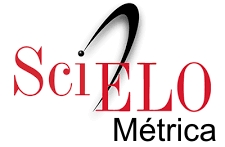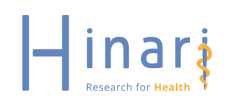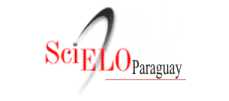Accidente cerebrovascular isquémico en un adulto joven
Resumen
Presentamos caso de un varón de 39 años con antecedentes de varios accidentes isquémicos transitorios que siempre resolvieron rápida y espontáneamente. Fue sometido a varios estudios cardiovasculares, neurovasculares y de neuro y angioimagen que resultaron normales. El paciente se presentó a consulta con una paresia facio-braquial derecha y disartria. Sin embargo, el cuadro cedió en el transcurso de horas a pesar de manifestarse una isquemia en los estudios neurovasculares. Por todo lo anterior se decidió estudiar trombofilias presentándose el resultado de una mutación del gen G20210A de la protrombina. Al alta, en tratamiento con anticoagulantes orales, el paciente se presenta asintomático con monitoreo mensual continuo.
Citas
2. Kernan WN, Ovbiagele B, Black HR, Bravata DM, Chimowitz MI, Ezekowitz MD, et al. Guidelines for the prevention of stroke in patients with stroke and transient ischemic attack: a guideline for healthcare professionals from the American Heart Association/American Stroke Association. Stroke. 2014; 45(7):2160‐236. doi:10.1161/STR.0000000000000024.
3. Flemming KD, Brown RD Jr, Petty GW, Huston J 3rd, Kallmes DF, Piepgras DG. Evaluation and management of transient ischemic attack and minor cerebral infarction. Mayo Clin Proc. 2004; 79(8):1071‐86. doi:10.4065/79.8.1071.
4. Easton JD, Saver JL, Albers GW, Alberts MJ, Chaturvedi S, Feldmann E, et al. Definition and evaluation of transient ischemic attack: a scientific statement for healthcare professionals from the American Heart Association/American Stroke Association Stroke Council; Council on Cardiovascular Surgery and Anesthesia; Council on Cardiovascular Radiology and Intervention; Council on Cardiovascular Nursing; and the Interdisciplinary Council on Peripheral Vascular Disease. The American Academy of Neurology affirms the value of this statement as an educational tool for neurologists. Stroke. 2009; 40(6):2276‐93. doi:10.1161/STROKEAHA.108.192218.
5. Pahus SH, Hansen AT, Hvas AM. Thrombophilia testing in young patients with ischemic stroke. Thromb Res. 2016; 137:108‐112. doi:10.1016/j.thromres.2015.11.006.
6. Gavva Ch, Johnson M, De Simone N, Sarode R. An audit of thrombophilia testing in patients with ischemic stroke or transient ischemic attack: The futility of testing. J Stroke Cerebrovasc Dis. 2018; 27(11):3301‐5. doi:10.1016/j.jstrokecerebrovasdis.2018.07.032.
7. Scuotto A, D'Avanzo R, Natale M, Rotondo M. Transient ischaemic attack: an exceptional presenting syndrome of a superior sagittal sinus thrombosis. BMJ Case Rep. 2013; 2013:bcr2013200894. doi:10.1136/bcr-2013-200894.
8. Kenet G, Lütkhoff LK, Albisetti M, Bernard T, Bonduel M, Brandao L, et al. Impact of thrombophilia on risk of arterial ischemic stroke or cerebral sinovenous thrombosis in neonates and children: a systematic review and meta-analysis of observational studies. Circulation. 2010; 121(16):1838‐47. doi:10.1161/CIRCULATIONAHA.109.913673.
9. Trenor CC, Michelson AD. Thrombophilia and pediatric stroke. Circulation. 2010; 121(16):1795‐1797. doi:10.1161/CIR.0b013e3181df6410.
10. Rubattu S, Di Angelantonio E, Nitsch D, Gigante B, Zanda B, Stanzione R, et al. Polymorphisms in prothrombotic genes and their impact on ischemic stroke in a Sardinian population. Thromb Haemost. 2005; 93(6):1095‐1100. doi:10.1160/TH04-07-0457.
11. Ripoll L, Mazoyer E, Woimant F, Drouet LO. Different contribution of factor V Leiden-associated hypercoagulability to ischaemic cerebrovascular disease in the elderly. Blood Coagul Fibrinolysis. 1997; 8(4):253‐4. doi:10.1097/00001721-199706000-00009.
12. Ridker PM, Hennekens CH, Miletich JP. G20210A mutation in prothrombin gene and risk of myocardial infarction, stroke, and venous thrombosis in a large cohort of US men. Circulation. 1999; 99(8):999-1004. doi.org/10.1161/01.CIR.99.8.999
13. Chiasakul T, De Jesus E, Tong J, Chen Y, Crowther M, Garcia D, et al. Inherited thrombophilia and the risk of arterial ischemic stroke: A systematic review and meta-analysis. J Am Heart Assoc. 2019; 8(19):e012877. doi:10.1161/JAHA.119.012877.
14. Omran SS, Lerario MP, Gialdini G, Merkler AE, Moya A, Chen ML, et al. Clinical impact of thrombophilia screening in young adults with ischemic stroke. J Stroke Cerebrovasc Dis. 2019; 28(4):882‐9. doi:10.1016/j.jstrokecerebrovasdis.2018.12.006.
15. Alakbarzade V, Taylor A, Scully M, Simister R, Chandratheva A. Utility of current thrombophilia screening in young patients with stroke and TIA. Stroke Vasc Neurol. 2018; 3(4):231‐6. doi:10.1136/svn-2018-000169.
16. Carroll BJ, Piazza G. Hypercoagulable states in arterial and venous thrombosis: When, how, and who to test?. Vasc Med. 2018; 23(4):388‐99. doi:10.1177/1358863X18755927.
17. Virparia R, Brunetti L, Vigdor S, Adams CD. Appropriateness of thrombophilia testing in patients in the acute care setting and an evaluation of the associated costs. J Thromb Thrombolysis. 2020; 49(1):108‐12. doi:10.1007/s11239-019-01930-w.
18. Favaloro EJ. Danger of false negative (exclusion) or false positive (diagnosis) for 'congenital thrombophilia' in the age of anticoagulants. Clin Chem Lab Med. 2019; 57(6):873‐82. doi:10.1515/cclm-2018-1041.
19. Prandoni P, Barbar S, Milan M, Campello E, Spiezia L, Piovella Ch, Pesavento R. Optimal duration of anticoagulation. Provoked versus unprovoked VTE and role of adjunctive thrombophilia and imaging tests. Thromb Haemost. 2015; 113(6):1210‐15. doi:10.1160/TH14-04-0396.

















